#Troyan Monastery
Explore tagged Tumblr posts
Text

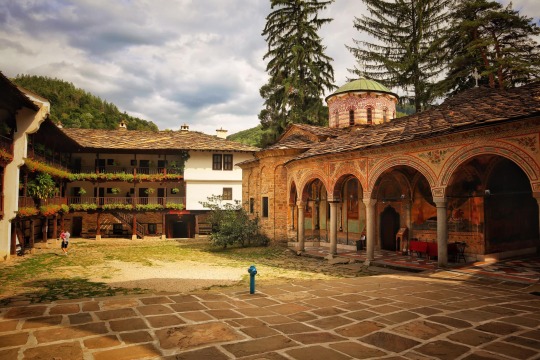
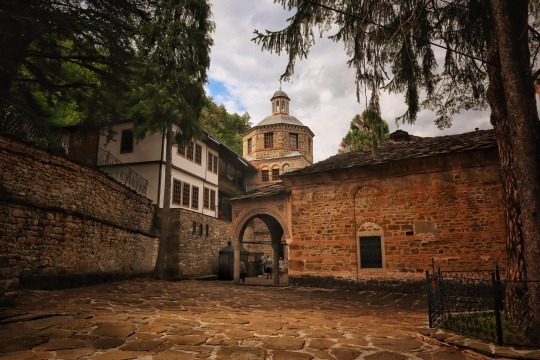
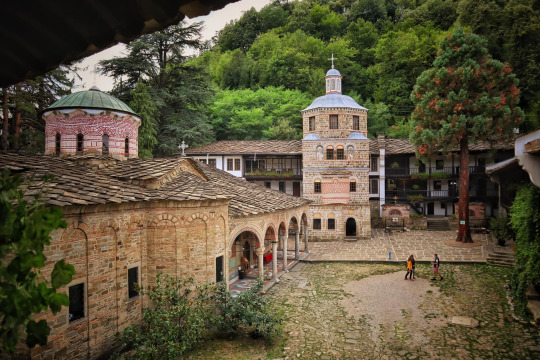
Troyan Monastery // Balkan // Bulgaria
#bulgaria#bulgara realty#balkan#bg#travel#trip#Troyan Monastery#troyan#monastery#world history#history#church
102 notes
·
View notes
Text
When you think of Jewish alcohol, Manischewitz (for better or worse) probably comes to mind. But slivovitz — a liquor with a forceful flavor and formidable strength — is arguably the Hebrew hooch.
Slivovitz, whose name is derived from the slavic word sliv for “damson plum,” is made by fermenting plums, distilling the mash to 80-100 proof alcohol, then aging the resulting liqueur for up to 10 years in oak barrels. Slivovitz is largely produced in Central and Eastern Europe, where different countries create their own variants. In the Czech Republic, for example, slivovitz (in Czech, slivovice) is considered the national drink of the region of Moravia and is served at room temperature in small shot glasses known as a panák. In Bulgaria, slivovitz holds special religious importance having been distilled for nearly seven centuries by members of Troyan Monastery. The monks’ special blend is made from Madzharkini plums, a variety that grows only in the Troyan region and is distinctive for its easily extracted pits.
Although grains are introduced during some forms of the slivovitz fermentation process, some distillers decided to forgo this step as a means of ensuring the liqueur was kosher. This gesture rendered slivovitz initially attractive to Jews during Passover, specifically Seder dinners that traditionally called for the consumption of up to four glasses of wine. Unfortunately, local wines were often made alongside other spirits under non-kosher conditions and thus were unacceptable. And because, as Dr. Glenn Dynner, professor of Jewish studies at Sarah Lawrence College, points out, imported kosher wine was often prohibitively expensive and of limited availability, Jews gravitated toward slivovitz on such celebratory occasions.
But its kashrut status alone is an insufficient reason why slivovitz is considered particularly, or even especially, Jewish. According to University of Pittsburgh professor and slivovitz historian, Dr. Martin Votruba, “Jews would acquire this local drink after moving into European kingdoms. They would simply pick it up as part of the culture.” It seems, however, their relationship with slivovitz became more purposeful during the 1800s in what is now Poland. Because they were considered relatively temperate compared to their countrymen, Jews were charged with operating drinking halls and taverns, and thus began to monopolize the liquor business, much of which revolved around slivovitz.
Another explanation as to why slivovitz holds a special place in the Jewish cultural imaginary is its strong anecdotal association with Jewish men of an older generation. In the 1990 film “Avalon,” which chronicles the trials and tribulations of a Polish Jewish immigrant family at the turn of the 20th century, brothers Sam and Gabriel reminisce about their father:
“He never drank water. And oh, boy, could he drink! What was that stuff called he always used to drink?’ ‘Slivovitz. Slivovitz. He used to call it, ‘Block and fall.’ You have one drink of that, you walk one block and you fall!”
Similarly, food writer Jordan Hoffman recalls his father describing how a swig of slivovitz (which they called ‘Shleeve-O-Wits’) by Hoffman’s grandfather signaled the breaking the Yom Kippur fast:
“… they’d peer out of the apartment window, waiting to spot him walking back from the synagogue. He’d take his sweet time, pull off his coat and hat, open a rarely used cabinet, blow the dust off an old bottle, take a sip of something, make a face, then announce that everyone could eat.”
As evinced by both accounts, slivovitz is not for the faint of heart and for some years, the caustic, bitter spirit fell out of favor. There are signs that slivovitz is slowly becoming back en vogue: restaurants, including New York’s renowned Kafana, serve slivovitz and a handful of distillers, such as Stone Barn Brandy Works, are producing their own new-fangled versions. And fans of the enormously popular series “Homeland” will attest that it’s the drink of choice for the character of Senator Andrew Lockhart.
Slivovitz’ nostalgic appeal combined with the introduction of new, more palatable varieties means it has some real so-old-school-it’s-cool potential. And who knows — the coming year may have us all slugging slivovitz slingers rather than espresso martinis.
youtube
7 notes
·
View notes
Text




Ако благоволишъ да ми покажешъ, Господи,
нѣкакви нови твои заповѣди
да ги разнасямъ по свѣта,
тогава напиши ги на скрижалитѣ
съ Кирилица —
��а да ги разбера до ��ъвършенство.
(I: Troyan monastery, Bulgaria. II: Sts. Cyril and Methodius icon by Zahari Zograf. III: Tomić Psalter, 14th century Tarnovo Literary School. IV: Odest dated Cyrillic inscription circa 921 AD, Krepcha, northeastern Bulgaria.)
29 notes
·
View notes
Text
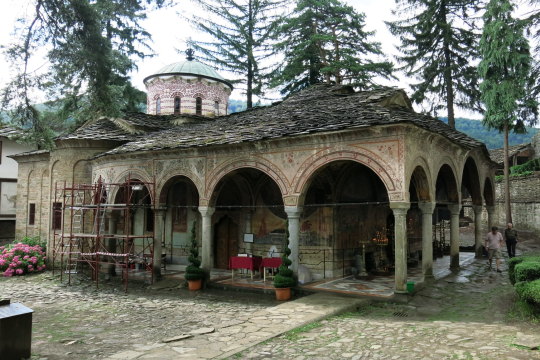
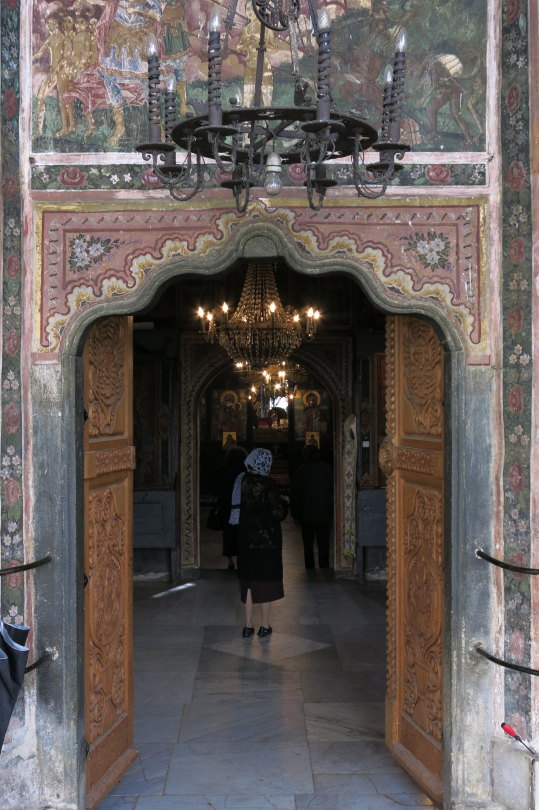

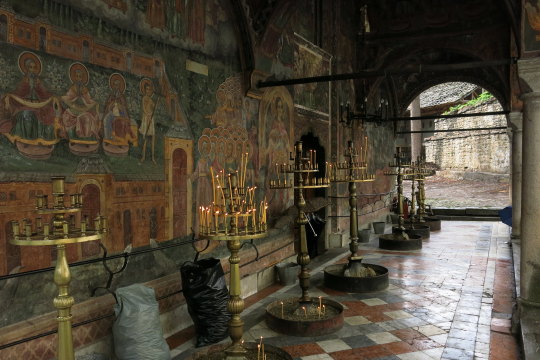
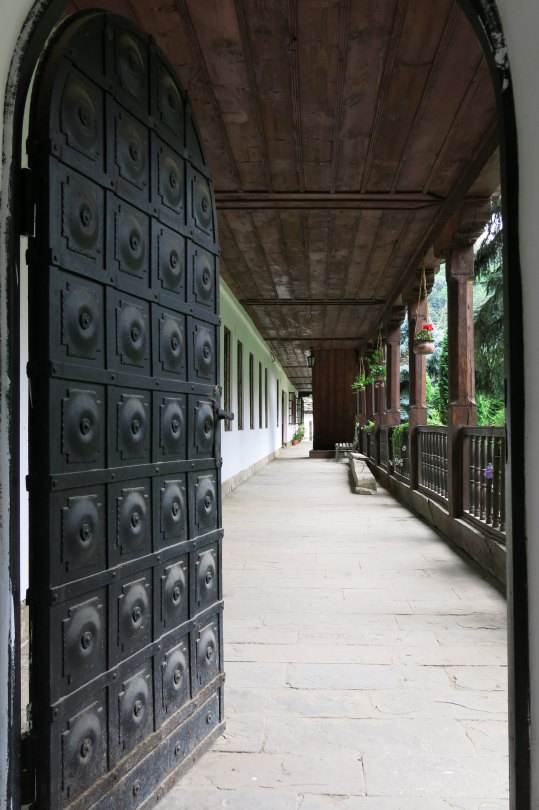
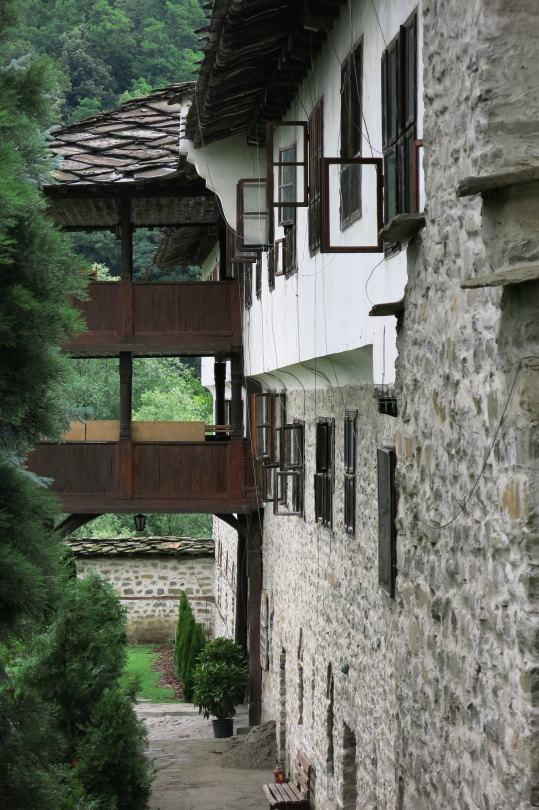

My Bulgaria - Troyan Monastery of the Assumption (2) (3) (4) (5) (6) (7) by Lyura
4 notes
·
View notes
Text

A chandelier at the Troyan Monastery
0 notes
Photo

Troyan Monastery founded in 1600 is the third largest in Bulgaria. The church (1835) contains some remarkable frescoes by Zahari Zograph.
9 notes
·
View notes
Photo

TROYAN MONASTERY
It is situated in the folds of the Balkan Range, some 12 km from the town of Troyan. It was built in the year 1840. The frescoes in its church were painted by the best icon-painters of the Samokov School, including Zahari Zograph. Tourist accommodation is available in the monastery.
ALADJA MONASTERY
It stands 14 km northeast of Varna and 3 km west of the Zlatni Pyassatsi resort complex, in one of the most picturesque areas of the Bulgarian Black Sea coast. It is an old monastery carved out of the rocks, consisting of an upper and a lower part. The cells are two and a half metres wide and two metres deep. The length of the church is 11.70 m and its width – 5 m. It is barely 2 m high. On the eastern wall is the altar, in which there are two niches with the comparatively best-preserved mural paintings. Although poorly preserved in general, the murals of the monastery reveal a remarkable development of mediaeval pictorial art. The monastery was most probably founded in the 13th-14th century private tour guide ephesus. 300 m from the monastery are the catacombs – rooms carved out of the rock which were probably used by the monks as dwellings.
The monastery can be reached from Zlatni Pyassatsi on foot along a forest path, or by bus along a panoramic road. From there the road goes on to Varna via Vinitsa village. There are souvenir shops and pavilions for snacks and drinks as well as a fountain.
ZEMEN MONASTERY
It is situated 25 km from Kyustendil on the railway line to Sofia, and is well known for its fine mural paintings dating from the middle of the 14th century. They are very well preserved and among the frescoes which are portraits of contemporaries are those of Deyan, a feudal lord of Kyustendil, and of his wife Doya, patrons of the monastery.
One can travel to the monastery by train as well as by car from Kyustendil or Sofia.
BOYANA CHURCH
At the foot of Mount Vitosha and 10 km from Sofia, stands a unique monument of Bulgarian art — the small Boyana Church, built in the 11th and 13th centuries. Exceptional mural paintings have been preserved in it in an excellent condition. The, unknown Boyana master has succeeded in expressing character traits on the faces of more than 300 large and small human figures, harmoniously distributed in two small compartments. He went beyond the conventionality of the period and became a precursor of the European Renaissance.
0 notes
Photo

TROYAN MONASTERY
It is situated in the folds of the Balkan Range, some 12 km from the town of Troyan. It was built in the year 1840. The frescoes in its church were painted by the best icon-painters of the Samokov School, including Zahari Zograph. Tourist accommodation is available in the monastery.
ALADJA MONASTERY
It stands 14 km northeast of Varna and 3 km west of the Zlatni Pyassatsi resort complex, in one of the most picturesque areas of the Bulgarian Black Sea coast. It is an old monastery carved out of the rocks, consisting of an upper and a lower part. The cells are two and a half metres wide and two metres deep. The length of the church is 11.70 m and its width – 5 m. It is barely 2 m high. On the eastern wall is the altar, in which there are two niches with the comparatively best-preserved mural paintings. Although poorly preserved in general, the murals of the monastery reveal a remarkable development of mediaeval pictorial art. The monastery was most probably founded in the 13th-14th century private tour guide ephesus. 300 m from the monastery are the catacombs – rooms carved out of the rock which were probably used by the monks as dwellings.
The monastery can be reached from Zlatni Pyassatsi on foot along a forest path, or by bus along a panoramic road. From there the road goes on to Varna via Vinitsa village. There are souvenir shops and pavilions for snacks and drinks as well as a fountain.
ZEMEN MONASTERY
It is situated 25 km from Kyustendil on the railway line to Sofia, and is well known for its fine mural paintings dating from the middle of the 14th century. They are very well preserved and among the frescoes which are portraits of contemporaries are those of Deyan, a feudal lord of Kyustendil, and of his wife Doya, patrons of the monastery.
One can travel to the monastery by train as well as by car from Kyustendil or Sofia.
BOYANA CHURCH
At the foot of Mount Vitosha and 10 km from Sofia, stands a unique monument of Bulgarian art — the small Boyana Church, built in the 11th and 13th centuries. Exceptional mural paintings have been preserved in it in an excellent condition. The, unknown Boyana master has succeeded in expressing character traits on the faces of more than 300 large and small human figures, harmoniously distributed in two small compartments. He went beyond the conventionality of the period and became a precursor of the European Renaissance.
0 notes
Photo

TROYAN MONASTERY
It is situated in the folds of the Balkan Range, some 12 km from the town of Troyan. It was built in the year 1840. The frescoes in its church were painted by the best icon-painters of the Samokov School, including Zahari Zograph. Tourist accommodation is available in the monastery.
ALADJA MONASTERY
It stands 14 km northeast of Varna and 3 km west of the Zlatni Pyassatsi resort complex, in one of the most picturesque areas of the Bulgarian Black Sea coast. It is an old monastery carved out of the rocks, consisting of an upper and a lower part. The cells are two and a half metres wide and two metres deep. The length of the church is 11.70 m and its width – 5 m. It is barely 2 m high. On the eastern wall is the altar, in which there are two niches with the comparatively best-preserved mural paintings. Although poorly preserved in general, the murals of the monastery reveal a remarkable development of mediaeval pictorial art. The monastery was most probably founded in the 13th-14th century private tour guide ephesus. 300 m from the monastery are the catacombs – rooms carved out of the rock which were probably used by the monks as dwellings.
The monastery can be reached from Zlatni Pyassatsi on foot along a forest path, or by bus along a panoramic road. From there the road goes on to Varna via Vinitsa village. There are souvenir shops and pavilions for snacks and drinks as well as a fountain.
ZEMEN MONASTERY
It is situated 25 km from Kyustendil on the railway line to Sofia, and is well known for its fine mural paintings dating from the middle of the 14th century. They are very well preserved and among the frescoes which are portraits of contemporaries are those of Deyan, a feudal lord of Kyustendil, and of his wife Doya, patrons of the monastery.
One can travel to the monastery by train as well as by car from Kyustendil or Sofia.
BOYANA CHURCH
At the foot of Mount Vitosha and 10 km from Sofia, stands a unique monument of Bulgarian art — the small Boyana Church, built in the 11th and 13th centuries. Exceptional mural paintings have been preserved in it in an excellent condition. The, unknown Boyana master has succeeded in expressing character traits on the faces of more than 300 large and small human figures, harmoniously distributed in two small compartments. He went beyond the conventionality of the period and became a precursor of the European Renaissance.
0 notes
Photo

TROYAN MONASTERY
It is situated in the folds of the Balkan Range, some 12 km from the town of Troyan. It was built in the year 1840. The frescoes in its church were painted by the best icon-painters of the Samokov School, including Zahari Zograph. Tourist accommodation is available in the monastery.
ALADJA MONASTERY
It stands 14 km northeast of Varna and 3 km west of the Zlatni Pyassatsi resort complex, in one of the most picturesque areas of the Bulgarian Black Sea coast. It is an old monastery carved out of the rocks, consisting of an upper and a lower part. The cells are two and a half metres wide and two metres deep. The length of the church is 11.70 m and its width – 5 m. It is barely 2 m high. On the eastern wall is the altar, in which there are two niches with the comparatively best-preserved mural paintings. Although poorly preserved in general, the murals of the monastery reveal a remarkable development of mediaeval pictorial art. The monastery was most probably founded in the 13th-14th century private tour guide ephesus. 300 m from the monastery are the catacombs – rooms carved out of the rock which were probably used by the monks as dwellings.
The monastery can be reached from Zlatni Pyassatsi on foot along a forest path, or by bus along a panoramic road. From there the road goes on to Varna via Vinitsa village. There are souvenir shops and pavilions for snacks and drinks as well as a fountain.
ZEMEN MONASTERY
It is situated 25 km from Kyustendil on the railway line to Sofia, and is well known for its fine mural paintings dating from the middle of the 14th century. They are very well preserved and among the frescoes which are portraits of contemporaries are those of Deyan, a feudal lord of Kyustendil, and of his wife Doya, patrons of the monastery.
One can travel to the monastery by train as well as by car from Kyustendil or Sofia.
BOYANA CHURCH
At the foot of Mount Vitosha and 10 km from Sofia, stands a unique monument of Bulgarian art — the small Boyana Church, built in the 11th and 13th centuries. Exceptional mural paintings have been preserved in it in an excellent condition. The, unknown Boyana master has succeeded in expressing character traits on the faces of more than 300 large and small human figures, harmoniously distributed in two small compartments. He went beyond the conventionality of the period and became a precursor of the European Renaissance.
0 notes
Photo

TROYAN MONASTERY
It is situated in the folds of the Balkan Range, some 12 km from the town of Troyan. It was built in the year 1840. The frescoes in its church were painted by the best icon-painters of the Samokov School, including Zahari Zograph. Tourist accommodation is available in the monastery.
ALADJA MONASTERY
It stands 14 km northeast of Varna and 3 km west of the Zlatni Pyassatsi resort complex, in one of the most picturesque areas of the Bulgarian Black Sea coast. It is an old monastery carved out of the rocks, consisting of an upper and a lower part. The cells are two and a half metres wide and two metres deep. The length of the church is 11.70 m and its width �� 5 m. It is barely 2 m high. On the eastern wall is the altar, in which there are two niches with the comparatively best-preserved mural paintings. Although poorly preserved in general, the murals of the monastery reveal a remarkable development of mediaeval pictorial art. The monastery was most probably founded in the 13th-14th century private tour guide ephesus. 300 m from the monastery are the catacombs – rooms carved out of the rock which were probably used by the monks as dwellings.
The monastery can be reached from Zlatni Pyassatsi on foot along a forest path, or by bus along a panoramic road. From there the road goes on to Varna via Vinitsa village. There are souvenir shops and pavilions for snacks and drinks as well as a fountain.
ZEMEN MONASTERY
It is situated 25 km from Kyustendil on the railway line to Sofia, and is well known for its fine mural paintings dating from the middle of the 14th century. They are very well preserved and among the frescoes which are portraits of contemporaries are those of Deyan, a feudal lord of Kyustendil, and of his wife Doya, patrons of the monastery.
One can travel to the monastery by train as well as by car from Kyustendil or Sofia.
BOYANA CHURCH
At the foot of Mount Vitosha and 10 km from Sofia, stands a unique monument of Bulgarian art — the small Boyana Church, built in the 11th and 13th centuries. Exceptional mural paintings have been preserved in it in an excellent condition. The, unknown Boyana master has succeeded in expressing character traits on the faces of more than 300 large and small human figures, harmoniously distributed in two small compartments. He went beyond the conventionality of the period and became a precursor of the European Renaissance.
0 notes
Photo

TROYAN MONASTERY
It is situated in the folds of the Balkan Range, some 12 km from the town of Troyan. It was built in the year 1840. The frescoes in its church were painted by the best icon-painters of the Samokov School, including Zahari Zograph. Tourist accommodation is available in the monastery.
ALADJA MONASTERY
It stands 14 km northeast of Varna and 3 km west of the Zlatni Pyassatsi resort complex, in one of the most picturesque areas of the Bulgarian Black Sea coast. It is an old monastery carved out of the rocks, consisting of an upper and a lower part. The cells are two and a half metres wide and two metres deep. The length of the church is 11.70 m and its width – 5 m. It is barely 2 m high. On the eastern wall is the altar, in which there are two niches with the comparatively best-preserved mural paintings. Although poorly preserved in general, the murals of the monastery reveal a remarkable development of mediaeval pictorial art. The monastery was most probably founded in the 13th-14th century private tour guide ephesus. 300 m from the monastery are the catacombs – rooms carved out of the rock which were probably used by the monks as dwellings.
The monastery can be reached from Zlatni Pyassatsi on foot along a forest path, or by bus along a panoramic road. From there the road goes on to Varna via Vinitsa village. There are souvenir shops and pavilions for snacks and drinks as well as a fountain.
ZEMEN MONASTERY
It is situated 25 km from Kyustendil on the railway line to Sofia, and is well known for its fine mural paintings dating from the middle of the 14th century. They are very well preserved and among the frescoes which are portraits of contemporaries are those of Deyan, a feudal lord of Kyustendil, and of his wife Doya, patrons of the monastery.
One can travel to the monastery by train as well as by car from Kyustendil or Sofia.
BOYANA CHURCH
At the foot of Mount Vitosha and 10 km from Sofia, stands a unique monument of Bulgarian art — the small Boyana Church, built in the 11th and 13th centuries. Exceptional mural paintings have been preserved in it in an excellent condition. The, unknown Boyana master has succeeded in expressing character traits on the faces of more than 300 large and small human figures, harmoniously distributed in two small compartments. He went beyond the conventionality of the period and became a precursor of the European Renaissance.
0 notes
Photo

TROYAN MONASTERY
It is situated in the folds of the Balkan Range, some 12 km from the town of Troyan. It was built in the year 1840. The frescoes in its church were painted by the best icon-painters of the Samokov School, including Zahari Zograph. Tourist accommodation is available in the monastery.
ALADJA MONASTERY
It stands 14 km northeast of Varna and 3 km west of the Zlatni Pyassatsi resort complex, in one of the most picturesque areas of the Bulgarian Black Sea coast. It is an old monastery carved out of the rocks, consisting of an upper and a lower part. The cells are two and a half metres wide and two metres deep. The length of the church is 11.70 m and its width – 5 m. It is barely 2 m high. On the eastern wall is the altar, in which there are two niches with the comparatively best-preserved mural paintings. Although poorly preserved in general, the murals of the monastery reveal a remarkable development of mediaeval pictorial art. The monastery was most probably founded in the 13th-14th century private tour guide ephesus. 300 m from the monastery are the catacombs – rooms carved out of the rock which were probably used by the monks as dwellings.
The monastery can be reached from Zlatni Pyassatsi on foot along a forest path, or by bus along a panoramic road. From there the road goes on to Varna via Vinitsa village. There are souvenir shops and pavilions for snacks and drinks as well as a fountain.
ZEMEN MONASTERY
It is situated 25 km from Kyustendil on the railway line to Sofia, and is well known for its fine mural paintings dating from the middle of the 14th century. They are very well preserved and among the frescoes which are portraits of contemporaries are those of Deyan, a feudal lord of Kyustendil, and of his wife Doya, patrons of the monastery.
One can travel to the monastery by train as well as by car from Kyustendil or Sofia.
BOYANA CHURCH
At the foot of Mount Vitosha and 10 km from Sofia, stands a unique monument of Bulgarian art — the small Boyana Church, built in the 11th and 13th centuries. Exceptional mural paintings have been preserved in it in an excellent condition. The, unknown Boyana master has succeeded in expressing character traits on the faces of more than 300 large and small human figures, harmoniously distributed in two small compartments. He went beyond the conventionality of the period and became a precursor of the European Renaissance.
0 notes
Photo

TROYAN MONASTERY
It is situated in the folds of the Balkan Range, some 12 km from the town of Troyan. It was built in the year 1840. The frescoes in its church were painted by the best icon-painters of the Samokov School, including Zahari Zograph. Tourist accommodation is available in the monastery.
ALADJA MONASTERY
It stands 14 km northeast of Varna and 3 km west of the Zlatni Pyassatsi resort complex, in one of the most picturesque areas of the Bulgarian Black Sea coast. It is an old monastery carved out of the rocks, consisting of an upper and a lower part. The cells are two and a half metres wide and two metres deep. The length of the church is 11.70 m and its width – 5 m. It is barely 2 m high. On the eastern wall is the altar, in which there are two niches with the comparatively best-preserved mural paintings. Although poorly preserved in general, the murals of the monastery reveal a remarkable development of mediaeval pictorial art. The monastery was most probably founded in the 13th-14th century private tour guide ephesus. 300 m from the monastery are the catacombs – rooms carved out of the rock which were probably used by the monks as dwellings.
The monastery can be reached from Zlatni Pyassatsi on foot along a forest path, or by bus along a panoramic road. From there the road goes on to Varna via Vinitsa village. There are souvenir shops and pavilions for snacks and drinks as well as a fountain.
ZEMEN MONASTERY
It is situated 25 km from Kyustendil on the railway line to Sofia, and is well known for its fine mural paintings dating from the middle of the 14th century. They are very well preserved and among the frescoes which are portraits of contemporaries are those of Deyan, a feudal lord of Kyustendil, and of his wife Doya, patrons of the monastery.
One can travel to the monastery by train as well as by car from Kyustendil or Sofia.
BOYANA CHURCH
At the foot of Mount Vitosha and 10 km from Sofia, stands a unique monument of Bulgarian art — the small Boyana Church, built in the 11th and 13th centuries. Exceptional mural paintings have been preserved in it in an excellent condition. The, unknown Boyana master has succeeded in expressing character traits on the faces of more than 300 large and small human figures, harmoniously distributed in two small compartments. He went beyond the conventionality of the period and became a precursor of the European Renaissance.
0 notes
Photo

TROYAN MONASTERY
It is situated in the folds of the Balkan Range, some 12 km from the town of Troyan. It was built in the year 1840. The frescoes in its church were painted by the best icon-painters of the Samokov School, including Zahari Zograph. Tourist accommodation is available in the monastery.
ALADJA MONASTERY
It stands 14 km northeast of Varna and 3 km west of the Zlatni Pyassatsi resort complex, in one of the most picturesque areas of the Bulgarian Black Sea coast. It is an old monastery carved out of the rocks, consisting of an upper and a lower part. The cells are two and a half metres wide and two metres deep. The length of the church is 11.70 m and its width – 5 m. It is barely 2 m high. On the eastern wall is the altar, in which there are two niches with the comparatively best-preserved mural paintings. Although poorly preserved in general, the murals of the monastery reveal a remarkable development of mediaeval pictorial art. The monastery was most probably founded in the 13th-14th century private tour guide ephesus. 300 m from the monastery are the catacombs – rooms carved out of the rock which were probably used by the monks as dwellings.
The monastery can be reached from Zlatni Pyassatsi on foot along a forest path, or by bus along a panoramic road. From there the road goes on to Varna via Vinitsa village. There are souvenir shops and pavilions for snacks and drinks as well as a fountain.
ZEMEN MONASTERY
It is situated 25 km from Kyustendil on the railway line to Sofia, and is well known for its fine mural paintings dating from the middle of the 14th century. They are very well preserved and among the frescoes which are portraits of contemporaries are those of Deyan, a feudal lord of Kyustendil, and of his wife Doya, patrons of the monastery.
One can travel to the monastery by train as well as by car from Kyustendil or Sofia.
BOYANA CHURCH
At the foot of Mount Vitosha and 10 km from Sofia, stands a unique monument of Bulgarian art — the small Boyana Church, built in the 11th and 13th centuries. Exceptional mural paintings have been preserved in it in an excellent condition. The, unknown Boyana master has succeeded in expressing character traits on the faces of more than 300 large and small human figures, harmoniously distributed in two small compartments. He went beyond the conventionality of the period and became a precursor of the European Renaissance.
0 notes
Photo

TROYAN MONASTERY
It is situated in the folds of the Balkan Range, some 12 km from the town of Troyan. It was built in the year 1840. The frescoes in its church were painted by the best icon-painters of the Samokov School, including Zahari Zograph. Tourist accommodation is available in the monastery.
ALADJA MONASTERY
It stands 14 km northeast of Varna and 3 km west of the Zlatni Pyassatsi resort complex, in one of the most picturesque areas of the Bulgarian Black Sea coast. It is an old monastery carved out of the rocks, consisting of an upper and a lower part. The cells are two and a half metres wide and two metres deep. The length of the church is 11.70 m and its width – 5 m. It is barely 2 m high. On the eastern wall is the altar, in which there are two niches with the comparatively best-preserved mural paintings. Although poorly preserved in general, the murals of the monastery reveal a remarkable development of mediaeval pictorial art. The monastery was most probably founded in the 13th-14th century private tour guide ephesus. 300 m from the monastery are the catacombs – rooms carved out of the rock which were probably used by the monks as dwellings.
The monastery can be reached from Zlatni Pyassatsi on foot along a forest path, or by bus along a panoramic road. From there the road goes on to Varna via Vinitsa village. There are souvenir shops and pavilions for snacks and drinks as well as a fountain.
ZEMEN MONASTERY
It is situated 25 km from Kyustendil on the railway line to Sofia, and is well known for its fine mural paintings dating from the middle of the 14th century. They are very well preserved and among the frescoes which are portraits of contemporaries are those of Deyan, a feudal lord of Kyustendil, and of his wife Doya, patrons of the monastery.
One can travel to the monastery by train as well as by car from Kyustendil or Sofia.
BOYANA CHURCH
At the foot of Mount Vitosha and 10 km from Sofia, stands a unique monument of Bulgarian art — the small Boyana Church, built in the 11th and 13th centuries. Exceptional mural paintings have been preserved in it in an excellent condition. The, unknown Boyana master has succeeded in expressing character traits on the faces of more than 300 large and small human figures, harmoniously distributed in two small compartments. He went beyond the conventionality of the period and became a precursor of the European Renaissance.
0 notes